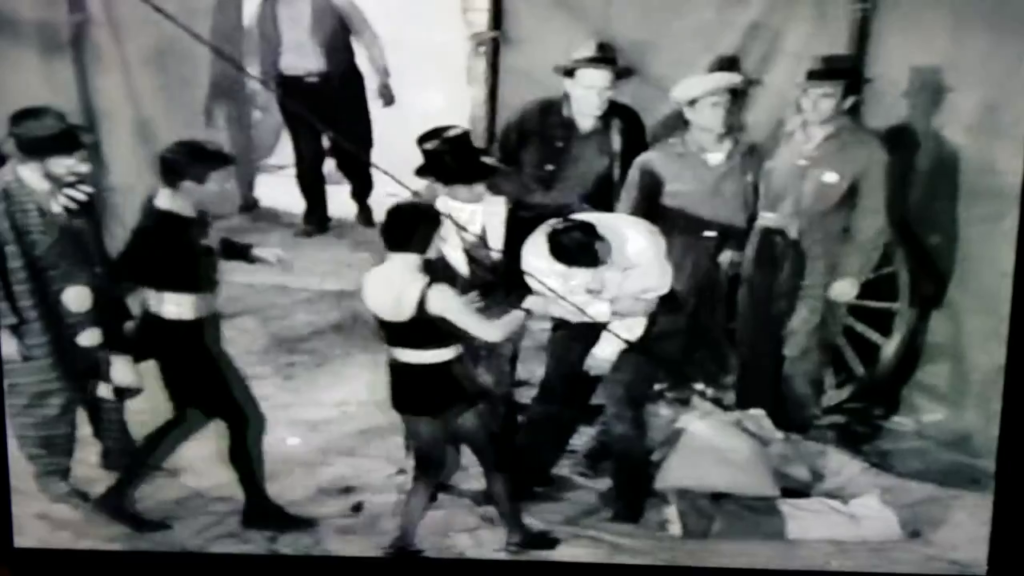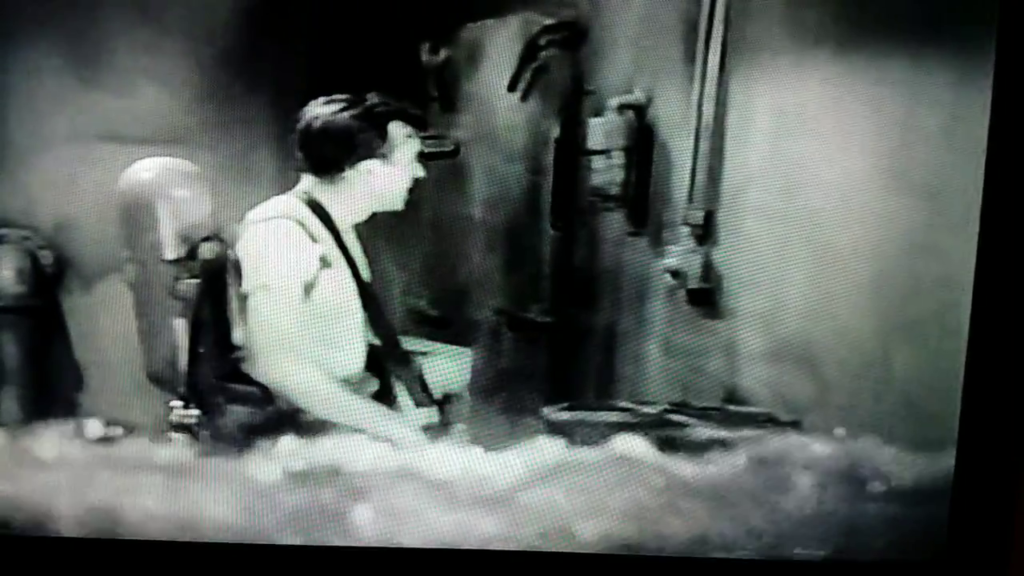
#471 – King of the Carnival (1955)
King of the Carnival (1955)
Film review #471
Director: Franklin Adreon
SYNOPSIS: A counterfeiting operation to flood the United States with fake money leads to treasury agents Art Kerr and Jim Haynes to investigate a circus in connection with the operation. Art asks acrobat Bert King to aid them in putting a stop to the counterfeiting, and to unmask the villain responsible…
THOUGHTS/ANALYSIS: King of the Carnival is a 1955 film serial and the last serial made by Republic Pictures. As the other two serial producing companies (Universal and Columbia) has already stopped producing them, King of the Carnival stands as the final serial, and the end of the format as a whole. The serial is set in a circus, where Bert King performs as an acrobat (The title “King” of the carnival refers to Bert, and is something that Republic Pictures also did with the lead character in King of the Royal Mounted). When agents of the U.S. treasury Art Kerr and Jim Haynes arrive on the scene investigating a counterfeit operation they believe is connected to the circus, Art asks his old friend Bert to aid them in unravelling the sinister plot. The villain’s plot centres around the production of counterfeit money and flooding the U.S. with it, so that the currency is devalued and other countries lose confidence in it. If that sounds like a dull and boring set-up, that’s because it is. There’s nothing else to this story other than this bizarre plot that doesn’t really make sense: surely it would take a huge operation to destroy a currency like the U.S. dollar, and the serial just has one guy working in a sunken boat. Such an intangible plot never connects with the viewers, and will be sure to bore. The plot does have this similar theme of many post-war serials, in that foreign powers attempt to sabotage the U.S. in some way, marking the onset of the cold war. However, the serial format never returned to it’s peak popularity like it had during the war. The circus element of the story is a bit more unique, but a lot of the action scenes are footage taken from the earlier serial Daredevils of the Red Circle, which wasn’t too great itself.
The characters are a typical and uninteresting bunch. You have the male leads, a single female character who is also an acrobat at the circle (although you never see her doing any of the stunts because the footage taken from Daredevils of the Red Circle had no female performers). The villain “Zorn” has no real presence and just gives orders to his henchmen to do the dirty work. It is revealed that someone at the circus is actually the leader of the counterfeiting operation, setting up a mystery villain reveal at the end, but you probably won’t care as it makes no real difference to the plot.
When this serial was released in 1955, the world of cinema and media in general had moved on from the fifteen or twenty years before when the serial was so popular. However, King of the Carnival could easily have been made at the height of the format’s popularity, and still be pretty poor. It takes no advantages of any advances in technology and the evolution of cinema, and just ends up being another cut-and-paste job that many of the serials are. At this time too, obviously televisions were appearing in people’s homes, and the idea of going to the theatre every week to watch a new instalment was fast becoming outdated when you could just tune in to an ongoing series from your television at home. The serial format never really tried to change or adapt to the times; the companies that made them clearly just saw that their time was up, and focused on feature films. Not that I can really blame them, as the introduction of TV made the format redundant. Going back to King of the Carnival, it feels very much like a poor production that is well aware of it’s fate. The ‘circus’ is clearly just a set with cloths draped all over them to give the illusion if it being a big tent, and the cliffhangers lack any form of imagination or suspense, especially when viewers had been seeing these same ones for over twenty years. Overall, King of the Carnival is a poor swansong for the serial format, accentuating their worst elements such as low budget, repetition, and one-dimensional characters, while not providing any imaginative settings, devices etc. that some of the more popular serials did. The serial format had very much run its course, perhaps many years before King of the Carnival was released, and it is a stark reminder of all of it’s worst elements.











